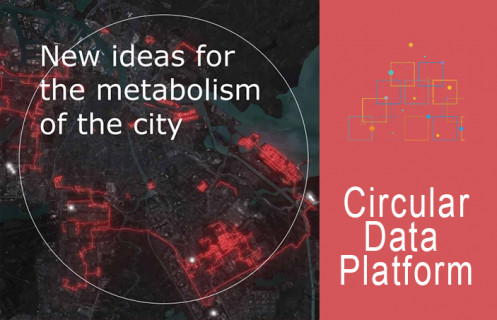creating insights in the flow of raw material and waste
Urban Pulse research as starting point
The Urban Pulse research generated the knowledge required to build sustainability strategies for energy, water, food, and natural resources in the city.
A fresh approach to ‘urban metabolism’ can ensure that Amsterdam will be spared shortages of energy, water, food or natural resources in the future, and will reduce environmental pressure. This can only be achieved by acquiring a clear and precise understanding of the flow patterns of essential resources in the city. The researchers used a combination of methods and technologies informed by local residents, knowledge and industry partners.
Data of different urban flows such as water, waste, food and energy must be integrated and made easily accessible to relevant stakeholders. Only then can it become possible to identify options for reuse, cascading and synergies between these different urban flows.

Download the Urban Pulse report
Read more about the PUMA Project.
Publications
<http://www.sciencedirect.com/science/article/pii/S0921344916302294>
http://onlinelibrary.wiley.com/doi/10.1111/jiec.12461/abstract
What is the goal of the project?
Many stakeholders and institutions referred to the need for greater transparency and insight into the flows in the region and elsewhere as a condition for a circular economy and optimal exchanges between, and the high-quality processing of, flows. A 'flow atlas platform' is therefore also one of the recommendations made in the Quickscan Circular Amsterdam report and the subsequent official response. The development of a (geographically explicit) digital raw material platform is therefore on the agenda, because it will provide an insight into how various design strategies can help improve the flows as a whole and which policy strategies can create more efficient production and consumption chains. Identifying the flows will help curb wastage, catalyse waste flows, recover raw materials and reduce the number of journeys.
What is the result of the project?
In 2016, students started mapping out valuable metals in the city. In 2017, consortia of companies and knowledge institutions will devise a concept for the development of a circular data platform with a number of flows, building on data and insights from the Quickscan report and Urban Pulse research by AMS. The data is added to annually. The initial focus will be on the construction chain.
Who initiated the project and which organizations are involved?
City of Amsterdam, Amsterdam Smart City & AMS institute
What is the next step?
Searching for more partners to develop the platform together.




